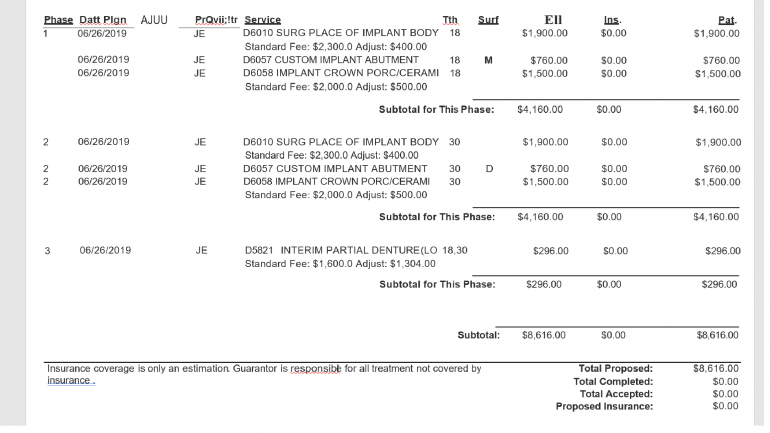
Dental Code D5952: Speech Aid Prosthesis for Pediatric Patients
Dental Code D5952 refers to a specific dental procedure known as a speech aid prosthesis for pediatric patients. This code encompasses the cost of a specialized dental prosthesis that is designed to assist in addressing speech difficulties in children. The speech aid prosthesis is intended to improve speech intelligibility and overall communication skills for pediatric patients who face challenges due to anatomical or functional abnormalities in the oral cavity. In this article, we will delve into the details of Dental Code D5952, including the procedure and the steps involved in its implementation.
Initial Assessment and Diagnosis
The first step in the process of obtaining a speech aid prosthesis for a pediatric patient is the initial assessment and diagnosis. This crucial stage involves a comprehensive evaluation conducted by a qualified dentist or oral health professional. The dentist carefully examines the child's oral cavity, including the teeth, gums, and overall oral health. In addition, the dentist assesses the child's speech patterns to identify any specific issues or challenges related to speech intelligibility. This assessment helps in determining the suitability of the speech aid prosthesis and developing an appropriate treatment plan.
Impressions and Molds
Following the initial assessment, the next step involves taking impressions and molds of the child's oral cavity. This process allows the dentist to create an accurate replica of the oral structures, including the teeth, gums, and surrounding tissues. To obtain these impressions, the dentist utilizes a dental putty or a similar material that is placed over the teeth and gums. This helps capture the precise shape and contours of the oral cavity. These impressions serve as a model for designing and fabricating the speech aid prosthesis, ensuring a custom fit for the child.
Prosthesis Design and Fabrication
Based on the impressions and molds obtained, the dentist proceeds with the design and fabrication of the speech aid prosthesis. This step involves the utilization of computer-aided design (CAD) software and specialized dental laboratories. The speech aid prosthesis is custom-made to fit the child's unique oral cavity and address their specific speech needs. The design process takes into account factors such as the child's age, jaw size, and any existing dental conditions. The prosthesis is typically constructed using durable and biocompatible materials that are safe for oral use.
Fitting and Adjustment
Once the speech aid prosthesis is fabricated, it is time for the fitting and adjustment phase. The dentist ensures that the prosthesis fits comfortably in the child's mouth and makes any necessary adjustments to optimize its functionality. This step may involve trimming or reshaping the prosthesis to achieve the desired fit and speech enhancement. The dentist takes into consideration the child's comfort and ensures that the prosthesis does not cause any discomfort or irritation while speaking or performing everyday activities. Additionally, the dentist educates the child's parents or caregivers on the proper care and maintenance of the prosthesis. During the fitting and adjustment phase, the dentist carefully places the speech aid prosthesis in the child's mouth, ensuring a comfortable fit that allows for natural speech production. The dentist may make minor modifications to the prosthesis, such as trimming or reshaping it, to optimize its functionality and improve speech clarity. This personalized approach takes into consideration the child's individual needs and comfort, ensuring that the prosthesis does not cause any discomfort or irritation while the child speaks or engages in everyday activities.
Follow-up and Speech Therapy
After the speech aid prosthesis is fitted, the child undergoes a follow-up period to monitor its effectiveness and address any concerns or issues that may arise. The dentist may schedule regular appointments to assess the child's progress and make any necessary adjustments to the prosthesis. Additionally, the dentist may recommend speech therapy sessions to complement the use of the speech aid prosthesis. Speech therapists work closely with the child to improve their articulation, language skills, and overall communication abilities. The combination of the speech aid prosthesis and speech therapy maximizes the potential for positive outcomes in terms of speech improvement.
Summary of Dental Code D5952
Dental Code D5952 covers the speech aid prosthesis procedure for pediatric patients. This specialized dental prosthesis is designed to help children overcome speech difficulties caused by anatomical or functional abnormalities in the oral cavity. The procedure involves an initial assessment and diagnosis, impressions and molds, prosthesis design and fabrication, fitting and adjustment, and follow-up with speech therapy. Through this comprehensive process, the speech aid prosthesis aims to enhance speech intelligibility and improve overall communication skills in pediatric patients.
In conclusion, Dental Code D5952 provides a means for pediatric patients to access the necessary dental treatment to address speech challenges. By utilizing the speech aid prosthesis, children can experience improved speech intelligibility and enhanced communication abilities. It is essential for parents and caregivers to consult with qualified dental professionals to determine the suitability of this procedure for their child and to ensure proper care and maintenance of the prosthesis.
Ready to revolutionize your dental spending habits? Dr. BestPrice is here to lead the way to smarter smiles.
